Showing 245851–245900 of 264546 results
-

Traesolide
$213.04 Add to cart View Product DetailsMolecular Formula : C18 H26 O
-

Traesolide
$391.58 Add to cart View Product DetailsMolecular Formula : C18 H26 O
-
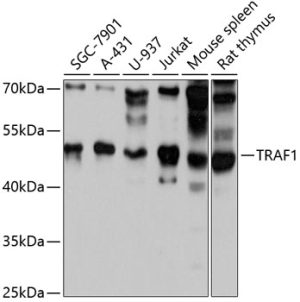
TRAF1 Rabbit pAb
$86.94 Add to cart View Product DetailsPolyclonal Antibodies
-

TRAF1 Rabbit pAb
$239.89 Add to cart View Product DetailsPolyclonal Antibodies
-

TRAF2 Rabbit pAb
$239.89 Add to cart View Product DetailsPolyclonal Antibodies
-

TRAF2 Rabbit pAb
$86.94 Add to cart View Product DetailsPolyclonal Antibodies
-

TRAF2 Rabbit pAb
$86.94 Add to cart View Product DetailsPolyclonal Antibodies
-

TRAF2 Rabbit pAb
$239.89 Add to cart View Product DetailsPolyclonal Antibodies
-

TRAF3 Rabbit pAb
$86.94 Add to cart View Product DetailsPolyclonal Antibodies
-

TRAF3 Rabbit pAb
$239.89 Add to cart View Product DetailsPolyclonal Antibodies
-

TRAF3 Rabbit pAb
$86.94 Add to cart View Product DetailsPolyclonal Antibodies
-

TRAF3 Rabbit pAb
$239.89 Add to cart View Product DetailsPolyclonal Antibodies
-

TRAF3IP2 Rabbit pAb
$86.94 Add to cart View Product DetailsPolyclonal Antibodies
-

TRAF3IP2 Rabbit pAb
$239.89 Add to cart View Product DetailsPolyclonal Antibodies
-
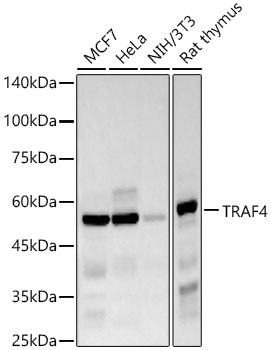
TRAF4 Rabbit mAb
$103.04 Add to cart View Product DetailsMonoclonal Antibodies
-

TRAF4 Rabbit mAb
$264.04 Add to cart View Product DetailsMonoclonal Antibodies
-

TRAF4 Rabbit pAb
$239.89 Add to cart View Product DetailsPolyclonal Antibodies
-

TRAF4 Rabbit pAb
$86.94 Add to cart View Product DetailsPolyclonal Antibodies
-

TRAF6 Rabbit mAb
$119.14 Add to cart View Product DetailsMonoclonal Antibodies
-

TRAF6 Rabbit mAb
$296.24 Add to cart View Product DetailsMonoclonal Antibodies
-

TRAF6 Rabbit pAb
$86.94 Add to cart View Product DetailsPolyclonal Antibodies
-

TRAF6 Rabbit pAb
$239.89 Add to cart View Product DetailsPolyclonal Antibodies
-

TRAF6 Rabbit pAb
$239.89 Add to cart View Product DetailsPolyclonal Antibodies
-

TRAF6 Rabbit pAb
$86.94 Add to cart View Product DetailsPolyclonal Antibodies
-
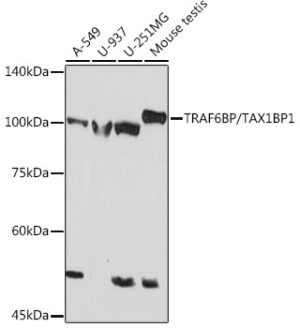
TRAF6BP/TAX1BP1 Rabbit mAb
$264.04 Add to cart View Product DetailsMonoclonal Antibodies
-

TRAF6BP/TAX1BP1 Rabbit mAb
$103.04 Add to cart View Product DetailsMonoclonal Antibodies
-

TRAF6BP/TAX1BP1 Rabbit pAb
$239.89 Add to cart View Product DetailsPolyclonal Antibodies
-

TRAF6BP/TAX1BP1 Rabbit pAb
$86.94 Add to cart View Product DetailsPolyclonal Antibodies
-
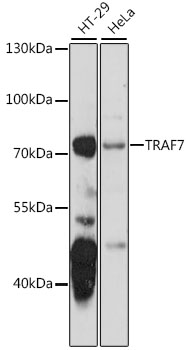
TRAF7 Rabbit pAb
$86.94 Add to cart View Product DetailsPolyclonal Antibodies
-
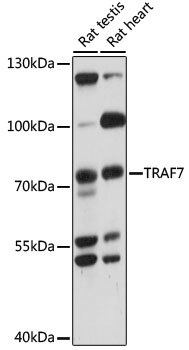
TRAF7 Rabbit pAb
$86.94 Add to cart View Product DetailsPolyclonal Antibodies
-

TRAF7 Rabbit pAb
$239.89 Add to cart View Product DetailsPolyclonal Antibodies
-

TRAF7 Rabbit pAb
$239.89 Add to cart View Product DetailsPolyclonal Antibodies
-

TRAF7 Rabbit pAb
$239.89 Add to cart View Product DetailsPolyclonal Antibodies
-

TRAF7 Rabbit pAb
$86.94 Add to cart View Product DetailsPolyclonal Antibodies
-
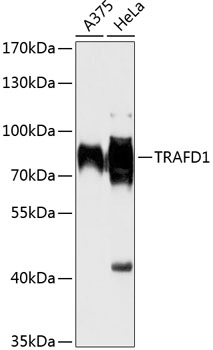
TRAFD1 Rabbit pAb
$239.89 Add to cart View Product DetailsPolyclonal Antibodies
-

TRAFD1 Rabbit pAb
$86.94 Add to cart View Product DetailsPolyclonal Antibodies
-

Tragacanth gum
$78.13 Add to cart View Product DetailsTragacanth Gum
-

Tragacanth gum
$258.03 Add to cart View Product DetailsTragacanth Gum
-

Tragacanth gum
$516.45 Add to cart View Product DetailsTragacanth Gum
-
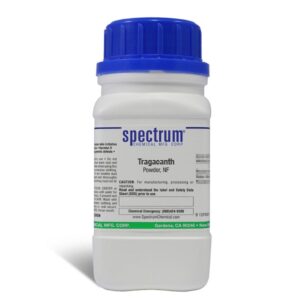
Tragacanth, Powder, NF
$102.14 Add to cart View Product DetailsTragacanth, Powder, NF
-

Tragacanth, Powder, NF
$333.81 Add to cart View Product DetailsTragacanth, Powder, NF
-
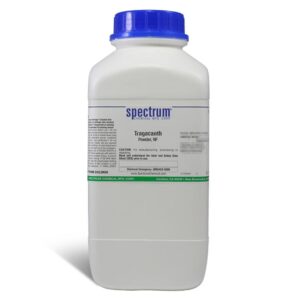
Tragacanth, Powder, NF
$1,041.38 Add to cart View Product DetailsTragacanth, Powder, NF
-
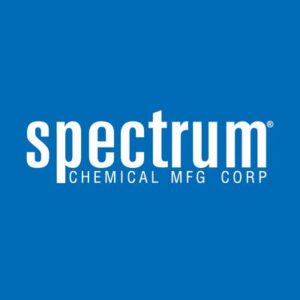
Tragacanth, Powder, NF
$3,632.68 Add to cart View Product DetailsTragacanth, Powder, NF
-
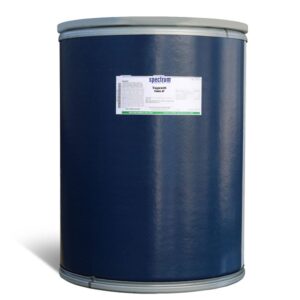
Tragacanth, Powder, NF
$7,774.09 Add to cart View Product DetailsTragacanth, Powder, NF
-
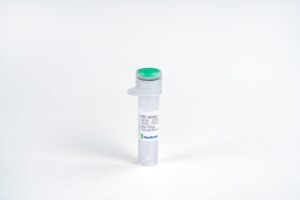
TRAIL, Mouse
$664.13 Add to cart View Product DetailsTNF-related apoptosis-inducing ligand (TRAIL), also known as Tumor Necrosis Factor Super-Family 10 (TNFSF10) or apoptosis 2 ligand (Apo2L), is a pleiotropic cytokine thatbelongs to the TNF superfamily. Full length TRAIL expressed in vivo is a type II transmembrane protein, although the soluble form also exists and functions. TRAIL has four major receptors: two death receptors DR4 and DR5, and two decoy receptors DcR1 and DcR2. TRAIL binds to the death receptors which recruits the FAS-associated death domain and activates caspases 8 and 10 which eventually leads to apoptosis. Because of its antitumor potential, TRAIL is activelystudied as a therapeutic agent. On the other hand, abnormal expression of TRAIL in small arteries can induce the proliferation of smooth muscle cells, thereby increasing vascular remodeling and pulmonary arterial hypertension.
-

TRAIL, Mouse
$43.13 Add to cart View Product DetailsTNF-related apoptosis-inducing ligand (TRAIL), also known as Tumor Necrosis Factor Super-Family 10 (TNFSF10) or apoptosis 2 ligand (Apo2L), is a pleiotropic cytokine thatbelongs to the TNF superfamily. Full length TRAIL expressed in vivo is a type II transmembrane protein, although the soluble form also exists and functions. TRAIL has four major receptors: two death receptors DR4 and DR5, and two decoy receptors DcR1 and DcR2. TRAIL binds to the death receptors which recruits the FAS-associated death domain and activates caspases 8 and 10 which eventually leads to apoptosis. Because of its antitumor potential, TRAIL is activelystudied as a therapeutic agent. On the other hand, abnormal expression of TRAIL in small arteries can induce the proliferation of smooth muscle cells, thereby increasing vascular remodeling and pulmonary arterial hypertension.
-

TRAIL, Mouse
$90.56 Add to cart View Product DetailsTNF-related apoptosis-inducing ligand (TRAIL), also known as Tumor Necrosis Factor Super-Family 10 (TNFSF10) or apoptosis 2 ligand (Apo2L), is a pleiotropic cytokine thatbelongs to the TNF superfamily. Full length TRAIL expressed in vivo is a type II transmembrane protein, although the soluble form also exists and functions. TRAIL has four major receptors: two death receptors DR4 and DR5, and two decoy receptors DcR1 and DcR2. TRAIL binds to the death receptors which recruits the FAS-associated death domain and activates caspases 8 and 10 which eventually leads to apoptosis. Because of its antitumor potential, TRAIL is activelystudied as a therapeutic agent. On the other hand, abnormal expression of TRAIL in small arteries can induce the proliferation of smooth muscle cells, thereby increasing vascular remodeling and pulmonary arterial hypertension.
-
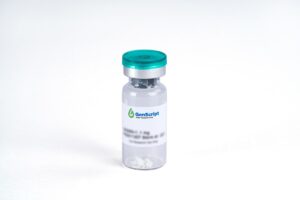
TRAIL/Apo2L, Human
$552.00 Add to cart View Product DetailsTRAIL/Apo2L, also known as Tumor Necrosis Factor Super-Family 10 (TNFSF10), is a pleiotropic cytokine thatbelongs to the TNF superfamily. The full length TRAIL expressed in vivo is a Type II transmembrane protein, although the soluble form also exists and functions. TRAIL has four major receptors: two death receptors DR4 and DR5, two decoy receptors DcR1 and DcR2. TRAIL binds to the death receptors, recruits the FAS-associated death domain, activates caspases 8 and 10, and eventually leads to apoptosis. Because of its antitumor potential, TRAIL is actively studied as a therapeutic agent. On the other hand, abnormal expression of TRAIL in small arteries can induce the proliferation of smooth muscle cells, resulting in increasing vascular remodeling and pulmonary arterial hypertension.
-
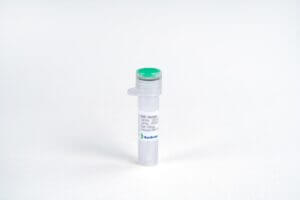
TRAIL/Apo2L, Human
$43.13 Add to cart View Product DetailsTRAIL/Apo2L, also known as Tumor Necrosis Factor Super-Family 10 (TNFSF10), is a pleiotropic cytokine thatbelongs to the TNF superfamily. The full length TRAIL expressed in vivo is a Type II transmembrane protein, although the soluble form also exists and functions. TRAIL has four major receptors: two death receptors DR4 and DR5, two decoy receptors DcR1 and DcR2. TRAIL binds to the death receptors, recruits the FAS-associated death domain, activates caspases 8 and 10, and eventually leads to apoptosis. Because of its antitumor potential, TRAIL is actively studied as a therapeutic agent. On the other hand, abnormal expression of TRAIL in small arteries can induce the proliferation of smooth muscle cells, resulting in increasing vascular remodeling and pulmonary arterial hypertension.
-

TRAIL/Apo2L, Human
$86.25 Add to cart View Product DetailsTRAIL/Apo2L, also known as Tumor Necrosis Factor Super-Family 10 (TNFSF10), is a pleiotropic cytokine thatbelongs to the TNF superfamily. The full length TRAIL expressed in vivo is a Type II transmembrane protein, although the soluble form also exists and functions. TRAIL has four major receptors: two death receptors DR4 and DR5, two decoy receptors DcR1 and DcR2. TRAIL binds to the death receptors, recruits the FAS-associated death domain, activates caspases 8 and 10, and eventually leads to apoptosis. Because of its antitumor potential, TRAIL is actively studied as a therapeutic agent. On the other hand, abnormal expression of TRAIL in small arteries can induce the proliferation of smooth muscle cells, resulting in increasing vascular remodeling and pulmonary arterial hypertension.






